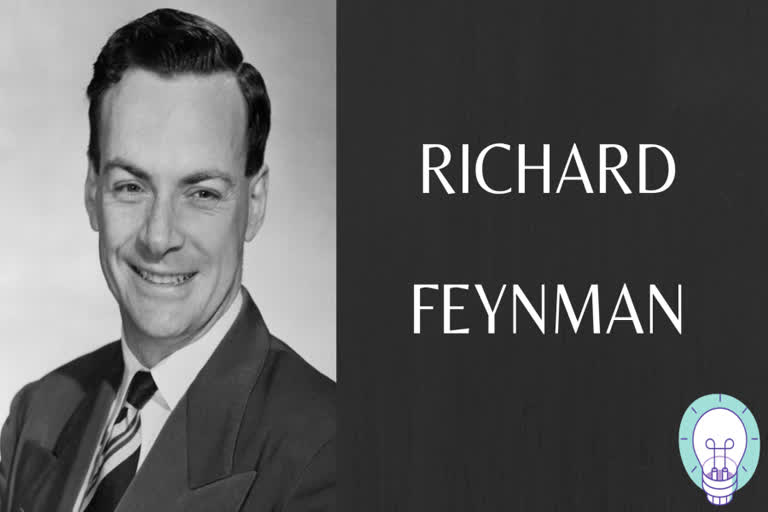Hyderabad: Richard Feynman was born on May 11, 1918, in Queens, New York City. He was known for his work in the path integral formulation of quantum mechanics. He also contributed to the development of quantum electrodynamics.
Work and Achievements of Richard Feynman
- Feynman revamped quantum electrodynamics, the hypothesis of the collaboration among light and matter and in this manner modified the manner in which science comprehends the idea of waves and particles.
- He was co-granted the Nobel Prize for Physics in 1965 for this work, which integrated into a tentatively wonderful bundle every one of the fluctuated marvels at work in light, radio, power, and attraction.
- The critical thinking devices that he concocted—including pictorial portrayals of molecule cooperations known as Feynman outlines—pervaded numerous spaces of hypothetical material science in the second 50% of the twentieth century.
- Brought into the world in the Far Rockaway segment of New York City, Feynman was the relative of Russian and Polish Jews who had moved to the United States late in the nineteenth century.
- He considered physical science at the Massachusetts Institute of Technology, where his undergrad theory (1939) proposed a unique and suffering way to deal with figuring powers in particles.
- Feynman got his doctorate at Princeton University in 1942.
- At Princeton, with his guide, John Archibald Wheeler, he built up a way to deal with quantum mechanics administered by the guideline of least activity.
Also Read: Redesigned MacBook Air to include iMac-like colour options
- Essentially, Feynman's strategy determined the probabilities of the relative multitude of potential ways a molecule could take in moving between various points.
- During World War II Feynman was selected to fill in as a staff individual from the U.S. nuclear bomb project at Princeton University (1941–42) and afterward at the new mystery research facility at Los Alamos, New Mexico (1943–45).
- At Los Alamos, he turned into the most youthful gathering pioneer in the hypothetical division of the Manhattan Project.
- Feynman likewise assumed responsibility for the venture's crude figuring exertion, utilizing a mixture of new ascertaining machines and human specialists to attempt to handle the tremendous measures of mathematical calculation needed by the undertaking.
- To start with, and generally significant is his work in rectifying the mistakes of prior plans of quantum electrodynamics, the hypothesis that clarifies the cooperations between electromagnetic radiation (photons) and charged subatomic particles like electrons and positrons (antielectrons).
- He presented straightforward outlines, presently called Feynman charts, that are effectively pictured realistic analogs of the muddled numerical articulations expected to depict the conduct of frameworks of interfacing particles.
- At war's end, Feynman turned into a partner educator at Cornell University (1945–50) and got back to considering the key issues of quantum electrodynamics.
- Feynman's talks at Caltech advanced into the books Quantum Electrodynamics (1961) and The Theory of Fundamental Processes (1961).
Also Read: This tool can help you better manage browser tabs
- In 1961 he started rearranging and showing the basic material science course at Caltech; the outcome, distributed as The Feynman Lectures on Physics, 3 vol. (1963–65), turned into an exemplary course reading.
- Feynman's perspectives on quantum mechanics, logical strategy, the relations among science and religion, and the part of excellence and vulnerability in logical information are communicated in two models of science composing, again refined from addresses: The Character of Physical Law (1965) and QED: The Strange Theory of Light and Matter (1985).
- He accomplished developing well-known acclaim after his demise, to a limited extent due to two self-portraying assortments of tales distributed in the years around his passing, "Unquestionably You're Joking, Mr. Feynman!": Adventures of a Curious Character (1985) and "What Do You Care What Other People Think?": Further Adventures of a Curious Character (1988).
Also Read: Remembering Joseph Priestley, best known for his discovery of oxygen
(Inputs from IANS)



